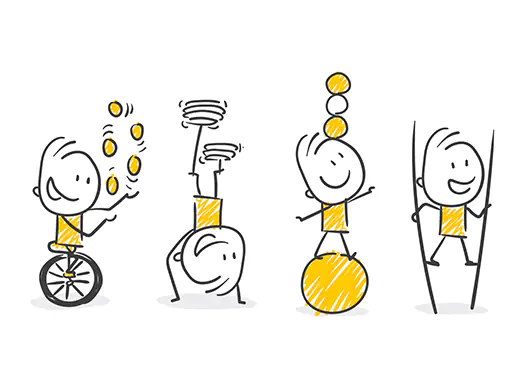
The Emergence of Artificial Intelligence
In my early teens, when I watched movies like Terminator and Matrix, I felt overwhelmed by the events in those works of fiction. At times I questioned myself, is there even an iota of possibility that something like this could happen? Cut to the present-day scenario; AI is for real. It is evident in our day-to-day life, right from refrigerators telling us when to get a fresh supply of milk to screening potential job candidates who have a relatively higher chance of quitting during the first six months on the job. So when did this all start? It all started in the year 1956 at Dartmouth College in Hanover. That is where John McCarthy coined the term ‘Artificial Intelligence’ .
In the last few years, everyone has realized that skills are the new global currency. In this blog, we will underline the importance of AI in solving one of the critical challenges faced by us in the context of this new global currency. And that challenge is the skill shortage across industries and the need for skilling, reskilling, and upskilling initiatives.
The Mismatch – Necessity of reskilling and upskilling for a future ready workforce
According to a report from McKinsey, 14 percent of the world’s population, which is equivalent to roughly 375 million people, will either have to switch occupations or acquire new skills by 2030 because of automation and AI. There is no doubt that automation and AI will boost economic growth and enhance productivity, but if not addressed in the right manner, it will also lead to the creation of a huge skill gap. Another report from World Economic Forum talks about the workforce who continue to stay in their roles; for them, the share of core skills that will change by 2025 is 40%. That is a substantial figure and what it means is they need to reskill or upskill to be relevant. This report also stresses about the new skills that will be in demand in the future are active learning, resilience, stress tolerance, and flexibility.
Now let us shift our focus as to what is our response to this skill gap challenge. In a recent global survey done by McKinsey, 87 percent of executives said they were experiencing skill gaps in the workforce or expected them within a few years. But less than half of the respondents had a clear sense of how to address the problem.
Solutions – AI based upskilling and reskilling of the workforce
An AI-enabled learning ecosystem can tackle the skills gap challenge head-on. The use of AI can significantly augment the scale and speed. The need of the hour is to establish an AI-driven skilling, upskilling, and reskilling ecosystem. So, the next question that comes to our mind is how do we go about this? Well, there are 5 key components to establish an AI-driven ecosystem, and I have listed them below.
1. Competency Framework
To start with, lay out a concise competency framework. This isn’t anything new. A lot of organizations already practice this. In simple words, competencies are subsets of a particular skill. For example, conflict management and decision making are essential competencies for leadership skills. The advantage of driving it at a competency level rather than a skill level is to ensure the challenge gets addressed at a micro-level.
2. Performance Data
Once we have the competency framework up and running, AI will come into the picture. At this stage, the role of AI would be to measure the performance data with the competency framework and identify the competency gaps. But to make this happen, there are a few critical things that we need to take care of.
There is a variety of performance data in any given organization, like performance reviews, customer ratings, sales numbers, 360-degree feedback, and more. And this data gets captured in various applications, portals, and systems. For AI to play an effective role, there will have to be a standardized way of capturing this data to run it against the competency framework and identify the gaps.
Remember, Moneyball, Billy Beane, and Oakland A’s. There was framework, tonnes of data analysis, and decisions, and the rest is a glorious history.
3. Recommending Learning Pathways
Once we have identified the skill gaps at a granular level, we need to address them. This is where AI can play a role. It can help in creating personalized learning pathways for individuals to help them fill in the competency gaps. AI would navigate through your LMS, learning applications, internal content repositories, third party content repositories, open educational resources, learning material, and activities to identify the right set of content. And blend this with the right amount of instructional design support, and you have a curated learning pathway designed to address the specific competency gaps.
4. Continuous Support
Now, we have identified the competency gaps and created personalized learning pathways. At this stage, we need to provide continuous support to our learners, whether they are working from office or remote. The key is to make the learning pathways available in the flow of work. This is where we can have an AI-enabled virtual coach. We can integrate this coach in the workplace productivity applications like Microsoft Teams or Slack. It brings specific learning at the point of need to the learner rather than making learning a checkbox activity.
5. Evaluation
This is the fifth and final step in the process. This is where we evaluate the learning outcomes and measure the success of the AI-enabled learning ecosystem. Once the learning pathways are complete and we’ve captured a fresh set of performance data, we bring in AI to do a fresh evaluation and figure out the delta in the competency gaps that we identified earlier and any new gaps that have come up. And based on the results, we can create a new set of individualized learning pathways and repeat the loop.
There isn’t any logical finish line to this activity; it is more of a continuous learning journey. It would be interesting to know your thoughts on this topic. Are you using AI in one or the other form to address skill gap issues? If yes, what are some advantages you have seen by using AI as compared to traditional methods? And also, what are the challenges that you have faced, or you foresee while using AI? Please feel free to write in the comments section below or drop a line at contact@harbingergroup.com.
In continuation to the EdTech story series, stay tuned till next week, wherein we’ll discuss another aspect of technology creating an impact on student outcomes and student engagement.






